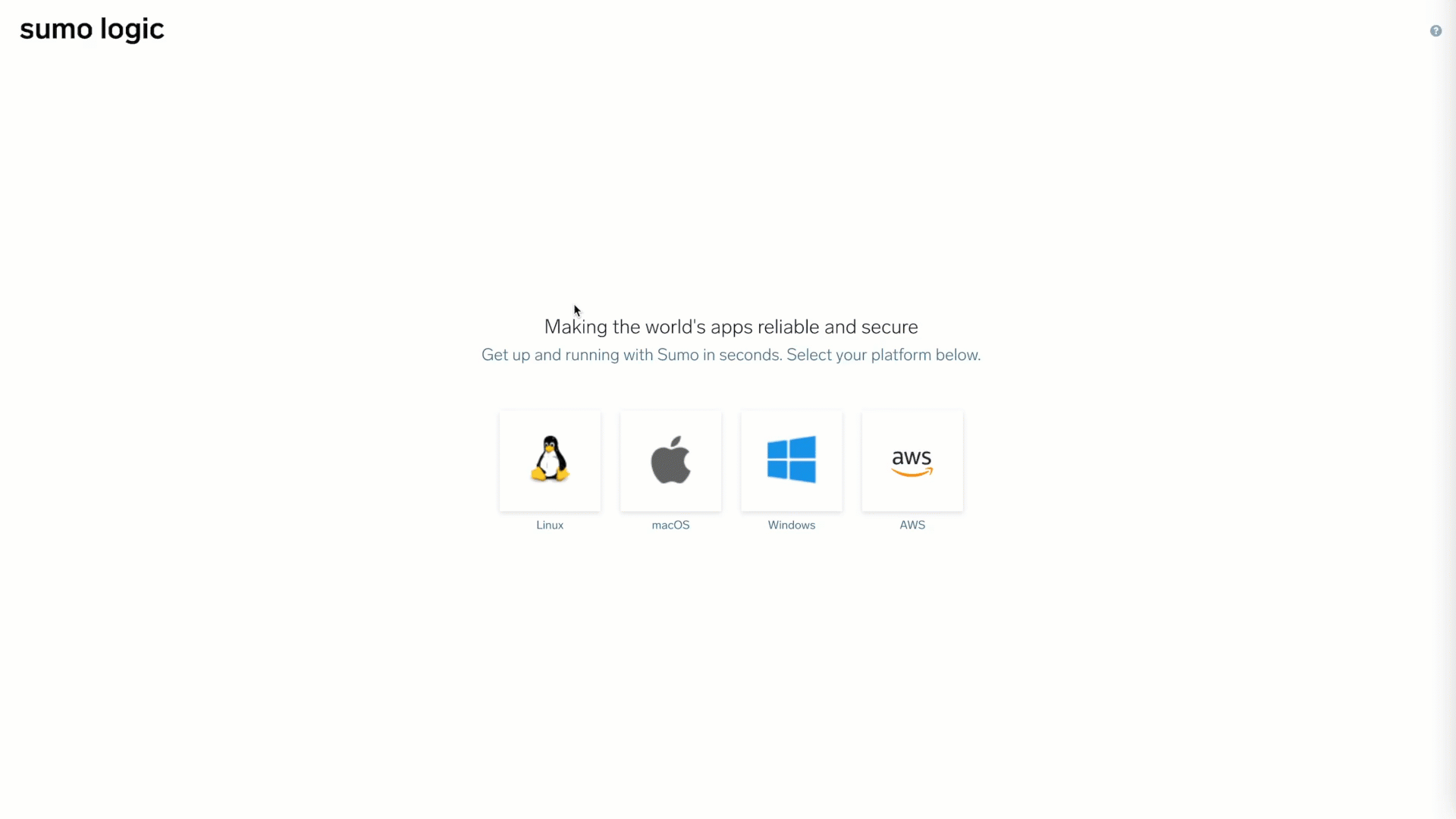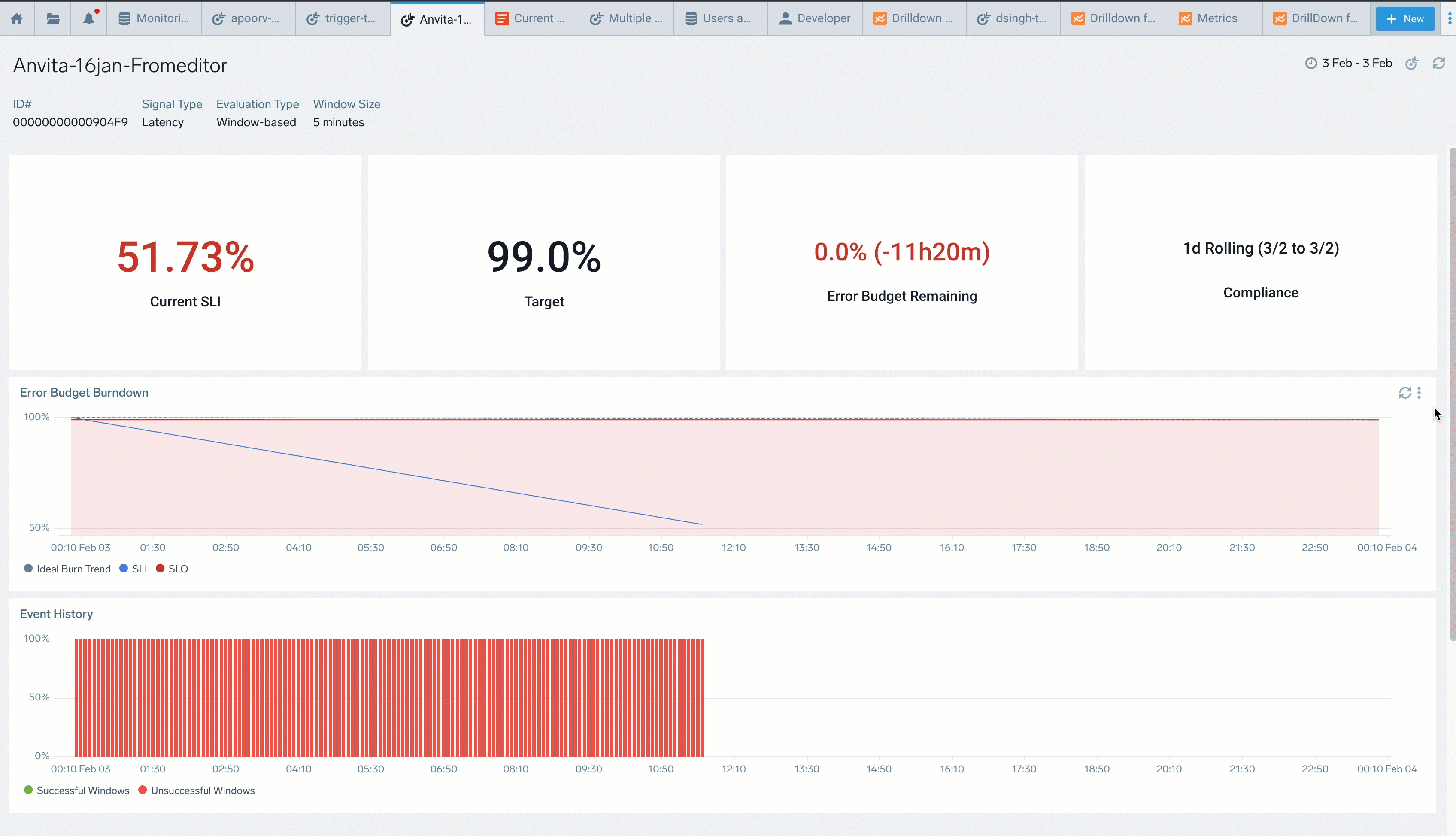Our new Scheduled Report feature enables you to receive an email copy of a dashboard periodically in either PDF or PNG format, allowing you to get insight into the dashboard without logging into the Sumo Logic platform.
NEW - Get Started with OpenTelemetry Monitoring in Minutes
We’re happy to announce a release that saves you configuration time. Our new and improved OpenTelemetry collector data onboarding workflow that gets you up and running with infrastructure monitoring in minutes. With this update, you can start monitoring host and process data, web servers (like IIS, Nginx), databases (like MySQL, Redis, Cassandra), and other sources out of the box - no manual configuration required. Learn more.
The Sumo Logic Distribution for OpenTelemetry, a single unified agent to send Logs, Metrics, Traces, and Metadata, helps simplify and streamline Observability and debugging to improve overall system reliability and efficiency. Learn more.
Note: The new onboarding workflows are only available for new Trial customers at this time.

Dashboard (New) Migration Tool (Beta)
Beta - To prepare for Dashboards (Classic) deprecation in late 2023, we've released a tool to assist you with migrating from Dashboards (Classic) to Dashboards (New). You can access this tool directly from a Classic dashboard page by clicking on the Migrate to new dashboards link at the top of the page.
For more information, including the current limitations of the tool, see Migrate Dashboards. Start planning and migrating your Classic dashboards now. You can learn more from our Community page.
Customizable Query Editor
We've made enhancements to the query editor that will make it easier for you to work with long queries and larger results. With this update, you can now adjust the size of the search query editor, allowing for better visibility into long queries. This will be especially helpful for those of you who have found it difficult to review long queries in their entirety due to the fixed editor size. Additionally, you can reduce the size of the editor while examining larger results, making it easier to navigate through your data.
SLO Lookup Tables
We've released SLO Lookup Tables, which allow you to view all SLO metadata in your environment. Data is managed and refreshed automatically on our end. To use, you can enlist the contents of the lookup table, which reside under a fixed path (sumo://content/slos) or join the results of your SLO precomputed data (from _view = sumologic_slo_output) with metadata contained in the lookup table. Learn more.
SLO Dashboard Panel Log Search
You can now launch a Log Search session directly from an SLO dashboard panel, giving you the ability to drill down further into your SLO data. You can also add Log Search results to any other Sumo Logic dashboard, allowing you to correlate SLO performance data with other categories of data. Learn more.

Multiple Metrics Query Support in SLOs
We have added support for multiple metrics queries for the threshold-based definition for the Query field in the SLI definition. You can use it to generate derived time series using arithmetic operations with the help of joins.
Multiple metrics queries can be defined from scratch on the SLO editor and the metrics page and imported to the SLO editor via the Create an SLO menu option.
Deployment Environment Support for Real User Monitoring
Real User Monitoring (RUM) dashboards now has additional explore level and capability to filter by deployment environment. To leverage this, you'll need to add the deployment.environment tag and value that corresponds to your development environment (like us-west-1, prod, dev) as a custom attribute to your RUM script.
Learn more:
Metrics Monitors Window Update
We've enhanced the alerting logic for Metrics Monitors to ensure more accurate alerts. For monitors that alert when all data points are above a given threshold at all times within, we've added a customizable parameter for the minimum number of required data points within an alerting window. And, for any existing monitor, the default setting is 2, which means that two data points are required within an alerting window to generate an alert. Learn more.
Monitor-Based SLOs
Critical Monitors that alert you to customer-critical service interruptions and other reliability measurements are great candidates to convert to Service-Level Objectives (SLOs). We've made this easy: you can now create SLOs directly from your Monitors in just a couple of clicks. The thresholds you set in your Monitor will carry over automatically to your new SLO definition, saving you time and effort. Learn more.
Bug Fix for Query Results
We've fixed a bug that caused inconsistent results for queries run on the Frequent and Infrequent data tiers due to inconsistent handling of whitespace characters within quoted phrases. With the fix, query results are now consistent across all data tiers.
For more information, see Normalization of Phrase Queries.
Password Policy Change
We have updated the Reuse Password After password policy. Previously, you could prevent Sumo Logic users from reusing up to 10 previously used passwords. Now, you can prevent users from reusing up to 12 previously used passwords. For more information, see Set the Password Policy.
Service List View (Traces)
Our new tracing Services List view provides a high-level summary of your service health insights and important KPIs in one compact table, allowing you to spot potential issues in your application infrastructure. Learn more.
Customizable Alert Recovery Payload
We've rolled out the ability to customize your alert resolution notifications. So when setting up Sumo Logic webhook connections, you can now design and test both your alert and recovery JSON payloads.
Currently supported for Slack, Microsoft Teams, AWS Lambda, Azure Functions, generic webhook, PagerDuty, OpsGenie, and ServiceNow. Learn more.
We're doing a slow rollout for this feature. By Thursday, Jan 19, all customers will have access.
New predict Metrics Operator
We’re released a new metrics operator: predict. The predict operator takes as input a single time series metric to predict future values. Predicting metrics such as CPU usage or memory consumption is useful for resource and capacity planning. For more information, see predict Metrics Operator.
Metrics Updates
We've released two metrics updates.
Expanded support for thresholds in metrics charts
We've expanded support for setting Warning and Critical threshold values for metrics query results in charts. Now, you can define threshold metrics values in the Chart view for Time Series panels, and for these chart types for Categorical panels: Line, Area, Bar, Column, and Table. For more information, see Set Warning and Critical Thresholds.
Unified
whereandfiltermetrics operatorsWe have merged the functionality of the
filtermetrics operator into thewhereoperator. Previously you could use thefilteroperator to filter out time series, and thewhereoperator to filter out data points within a time series. Now, the updatedwhereoperator supports filtering by time series and by data point. For more information, see where Metrics Operator.noteThe filter operator is still supported, but will be deprecated in the future.
Search Query Editor Update
We have added enhanced functionality to the Query Editor to help you create a better search experience and reduce errors when writing queries. This feature matches any open quotes, open brackets (curly, square, or parenthesis brackets), and completes the quotes automatically.
2022 Archive
This is an archive of the 2022 Sumo Logic Service Release Notes.
2021 Archive
This is an archive of the 2021 Sumo Logic Service Release Notes.
2020 Archive
This is an archive of the 2020 Sumo Logic Service Release Notes.
2019 Archive
This is an archive of the 2019 Sumo Logic Service Release Notes.
2018 Archive
This is an archive of the 2018 Sumo Logic Service Release Notes.
2017 Archive
This is an archive of the 2017 Sumo Logic Service Release Notes.
2016 Archive
This is an archive of the 2016 Sumo Logic Service Release Notes.
